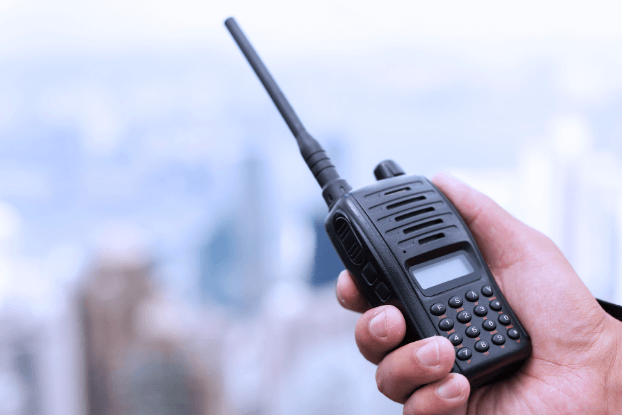Walkie Talkie Etiquette: Best Practices for Clear and Effective Communication

For many sectors of the workforce, from security and emergency services to construction and event management, communication is crucial – especially under the conditions that necessitate instant communication. Yet for some of these sectors, using a cell phone may not be a practical or safe option.
Walkie-talkies are still a preferred means of communication within these and many other industries. However, talking on a 2-way isn’t quite the same as talking on a cell phone. There are several differences in how to communicate when using push-to-talk (PTT) technology. In today’s article, we will look at little deeper into proper etiquette when using these devices.
Speak Clearly and Concisely
Walkie talkies are made for fast, efficient talking. Keep your conversations brief and direct. When you communicate via one of these devices, it’s imperative to speak slowly and articulate every syllable to avoid confusion, especially if you’re in an environment where loud sounds are present.
Using entendres and other types of wordplay is not recommended; you really should say what you mean plainly.
See also: The Quiet Tech Revolution in Schools: Why Interactive Displays Are the New Must-Have Tool
Identify Yourself and Your Recipient
Before sending a message, declare your identity and the identity of the person you are addressing. For instance, say, “Security Post 1, this is your Team Lead,” instead of just launching into your message. This not only ensures that the message is being directed to the right person but also cuts down on confusion.
Use Standardized Phrases and Codes
Numerous industries employ standard radio communication codes to make messaging easier. They use familiar terms like “Copy” (received the message), “Roger” (understood), and “Over” (I’m done, your turn) to keep conversations flowing. Some situations call for even greater ease of communication, like emergency settings, where codes like “10-4” (acknowledged) and “10-20” (location) come into play.
To indicate that a conversation is finished, use such phrases as “Over and out” or just “Out.” This stops any follow-up transmissions that aren’t completely necessary and shows that the communicating is done.
Wait Before Speaking
When using a walkie-talkie, there is often a slight delay after pressing the push-to-talk button before transmission begins. To avoid cutting off the beginning of your message, wait a second before speaking after pressing the button. Similarly, pause for a moment after finishing your message to ensure it is fully transmitted.
Avoid Interrupting Ongoing Conversations
Because only one person can be heard at a time, do not attempt to “talk over” another when they are speaking. When you want to begin your own conversation, wait until the individual currently talking has finished.
If your statement is time-sensitive and can’t wait, you might try saying “Break”, as a way of respectfully signaling that you need a moment to issue a directive.
Mind Your Volume and Background Noise
Talk at a steady volume; too loud can cause distortion, while too soft can be hard to hear. The microphone picks up even quiet sounds, so if there’s any background noise, it will be heard. If possible, cover the mic to help eliminate that noise, or better yet, go to a place without background noise.
Using Walkie Talkies Properly Enhances Their Efficiency and Effectiveness
To make sure that operations run smoothly and safely, it’s important to communicate effectively, and this is especially true when using the device meant to be the most reliable communication tool; the 2-way radio. Smooth communication ensures not just effectiveness but also safety.





